From the stalls of the bouquinistes along the Seine to the rarified galleries of Saint-Germain and the Madeleine and out to the puces (flea markets) at the Porte de Clignancourt in the north and the Porte de Vanves in the south, Paris brims with antiques. As with many things, from architecture to cooking, the French refined the trade into an art form and a ritual.
The sacrosanct relationship between dealer and client has special importance in a city in which buying an ordinary baguette is a complex act that is as social as it is commercial. The European sculpture dealer Patrice Bellanger defines it as “a profound cultural exchange” and “an intimate relationship born of shared interests, which is enriched over time.” Despite the increase in Paris auction activity ensuing from the amended European Union regulations and François Pinault’s purchase of Christie’s in 1998, Bellanger conjectures, “Paris is the only city that has resisted public auctions.” To fully depict Paris’s antiques trade would require the pages of a book. The dealers described below, however, hint at its contours.
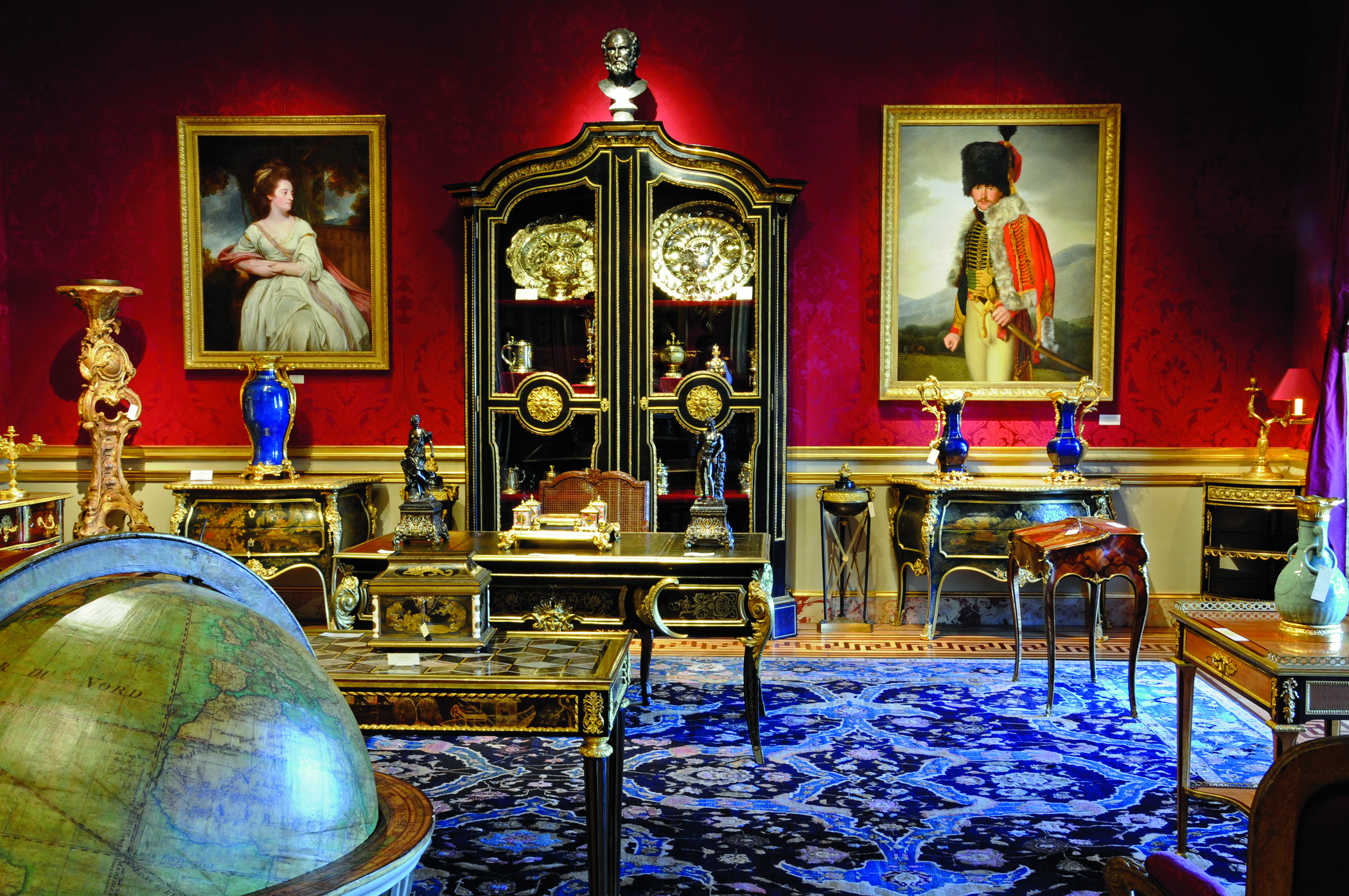
Regal
Galerie J. Kugel
25, quai Anatole France
(7th arrondissement)
33-(0)1-42-60-86-23
www.galeriekugel.com
Galerie J. Kugel displays its astounding (in quality, provenance, and extent) furniture, silver, paintings, objets de vertu, carpets, ivory, jewelry, and scientific instruments from the Middle Ages and Renaissance through the early nineteenth century in the Palladian style Hôtel Collot, built across the Seine from the Tuileries in 1840 for Jean-Pierre Collot, the director of the French Mint. Nicolas Kugel, who runs the business with his brother Alexis, describes their diverse yet impeccable inventory as speaking to the longstanding European tradition of connoisseurship across specialized fields. The gallery’s baroque cabinets-on-stand, which are surrounded by the myriad curiosities they once might have contained, evoke the eclectic collectors of bygone eras who commissioned them. Kugel points to Yves Saint Laurent and Pierre Bergé, who purchased large portions of their collection from Kugel, as contemporary examples. So too, Hubert de Givenchy acquired his rare, sixteenth-century Limoges enamels and glamorous Apollo armoire of about 1700 by André-Charles Boulle from this distinguished gallery.
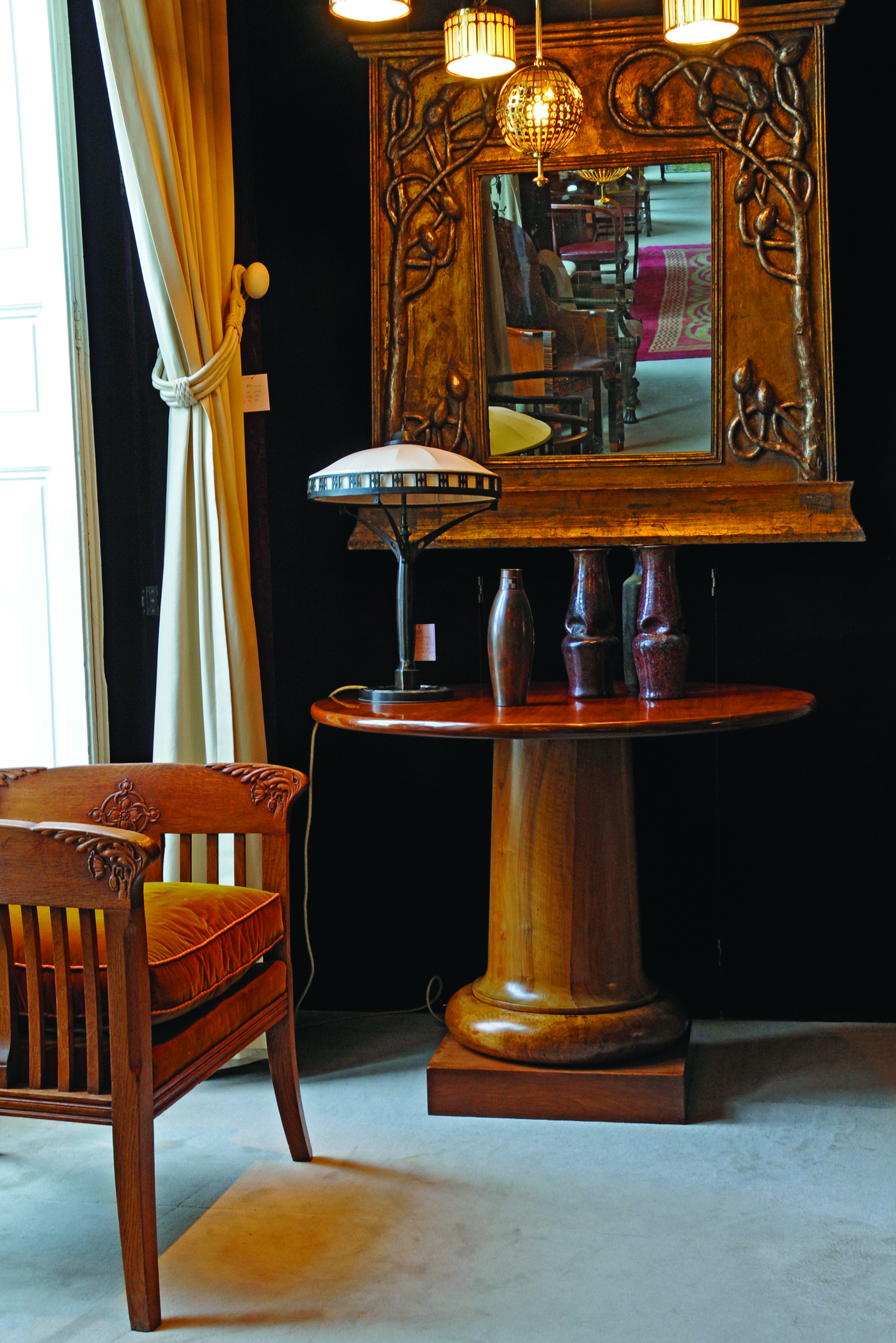
Eclectic European
Galerie Camoin Demachy
9, quai Voltaire
(7th arrondissement)
33-(0)1-42-61-82-06
e-mail: camoin.demachy@wanadoo.fr
Whether it be a baroque mirror, a Wiener Werkstätte cabinet, or a spare 1950s chandelier, Galerie Camoin Demachy, on the quai Voltaire across from the Louvre, sells objects of dramatic flair. Proprietor Alain Demachy believes, “There are no bad periods, just bad artists.” Defining himself as an architect and interior designer first and a dealer second, he looks for the visceral frisson of a coup de cœur in the pieces he acquires.
If the finest late eighteenth-century French pieces remain personal favorites, he sees the merits of numerous styles and the threads that draw them together. In his opinion, for example, the startling modernism of a Georges Jacob chair made of Cuban mahogany shows that the Bauhaus invented nothing.
With many international decorators on his roster of clients, Demachy keeps his design business distinct from his gallery and also regularly refers clients to other dealers such as longtime friends Jean-Marie Rossi of Aveline (94, rue du Faubourg Saint-Honoré; www.ave line.com) and Jacques Perrin at Perrin Antiquaires (98, rue du Faubourg Saint-Honoré; www.galerieperrin.com).
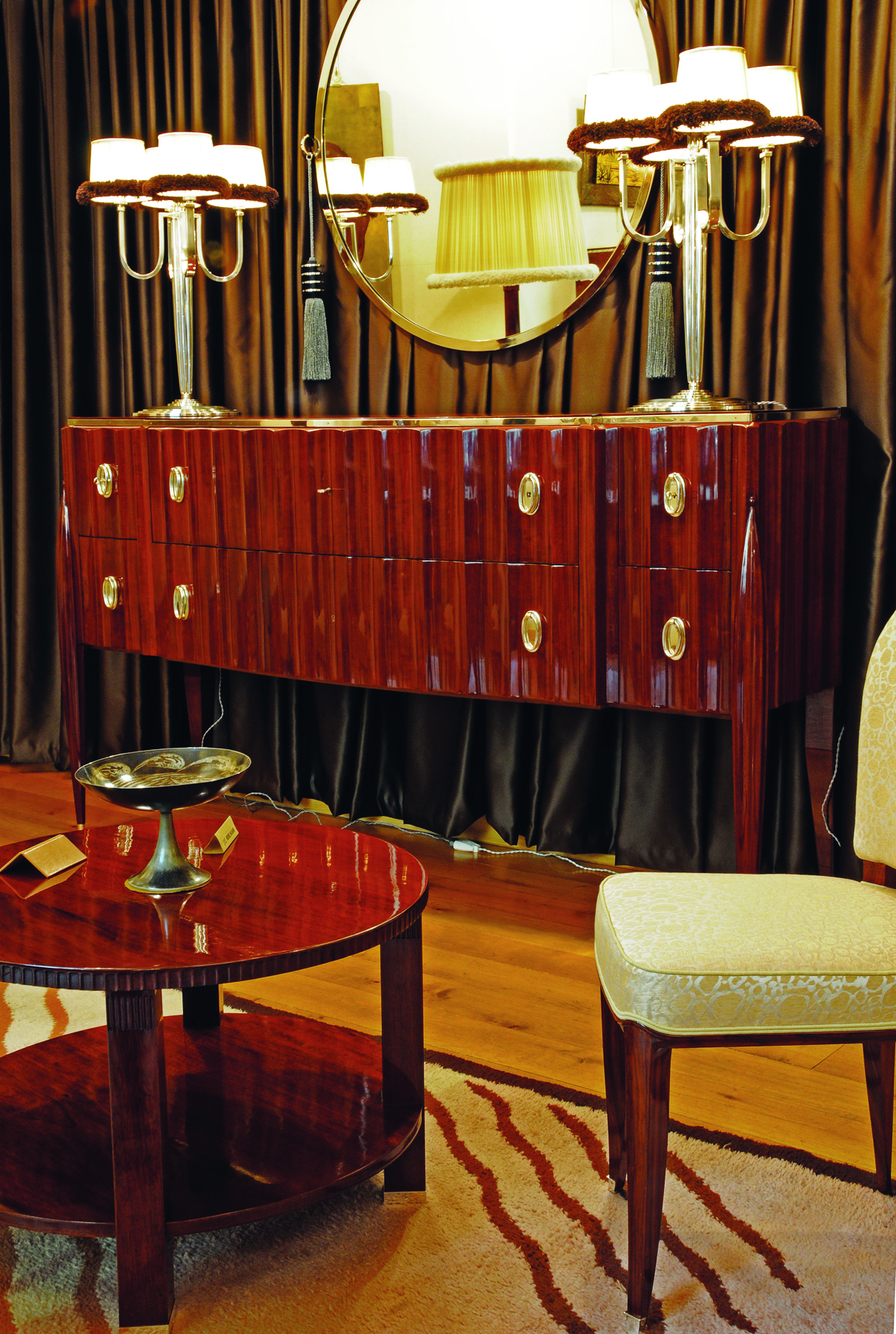
Art deco
Makassar France
19, avenue Matignon
(8th arrondissement)
33-(0)1-53-96-95-85
www.makassar-france.com
Makassar, on the elegant avenue Matignon, abounds with luxurious art deco furniture, paintings, textiles, lighting, sculpture, screens, and ceramics. Émile Jacques Ruhlmann remains the preferred master of proprietress Monique Magnan. She also favors comparably sleek designs by, among others, Maison Dominique (especially of the 1930s), pre-World War II Jules Leleu, Alfred Porteneuve, Jacques Adnet, Clément Rousseau, and Jean Dunand.
Magnan seeks well-documented pieces that elicit an emotion. The sculptural form and meticulous detailing of an eggshell and lacquer covered desk by Henri Aguesse of 1928 embodies for her the moment “when furniture becomes sculpture.”
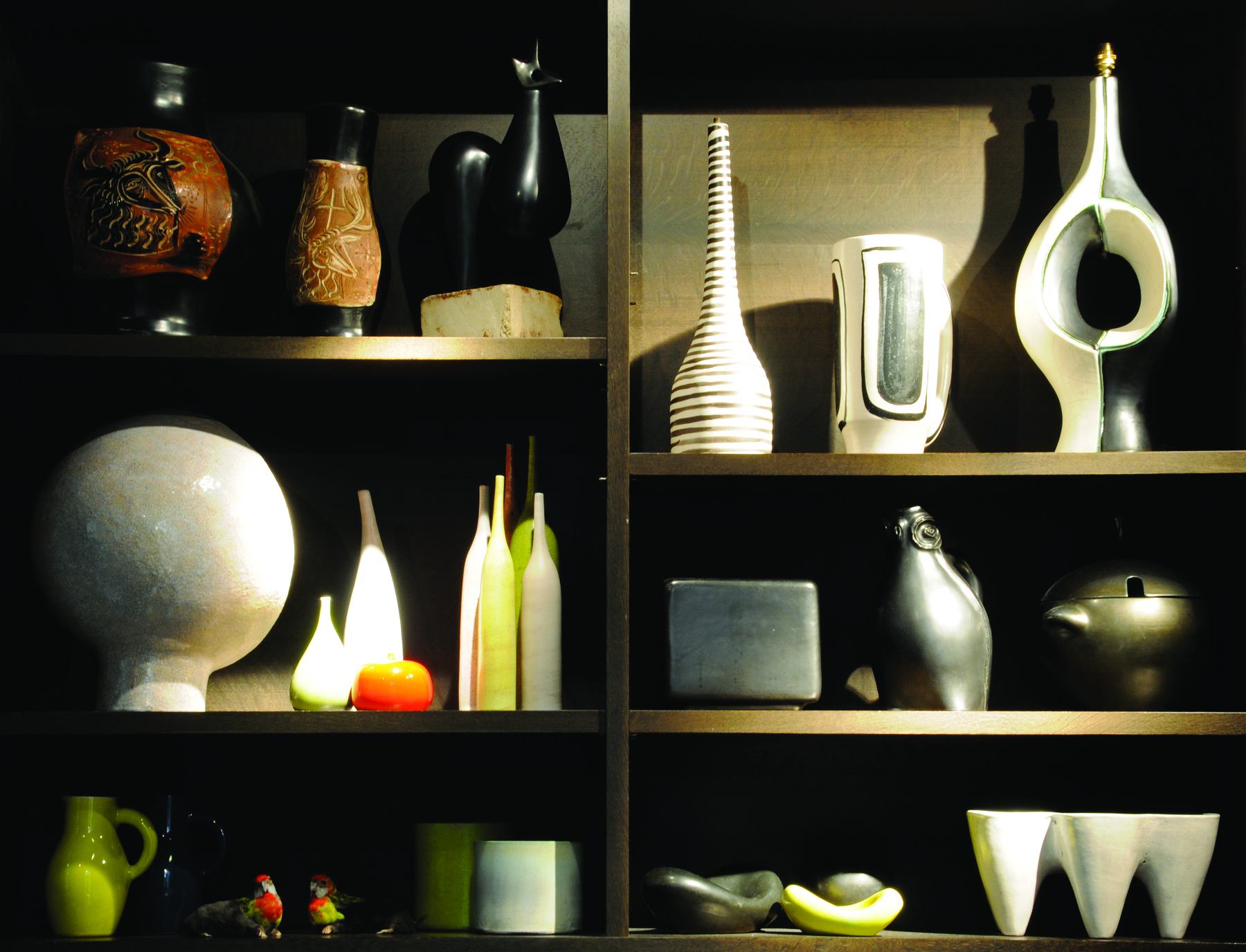
Fifties, sixties, seventies
Jousse Entreprise
18, rue de Seine
(6th arrondissement)
33-(0)1-53-82-13-60
www.jousse-entreprise.com
A table by Jean Prouvé that Philippe Jousse, then a photographer, purchased in the late sixties started him on the path to full-time dealing. Prouvé (about whom he published the first major monograph) remains a staple at his streamlined quarters on the rue de Seine. Jousse also carries furniture (much of it one of a kind) by Le Corbusier, Charlotte Perriand, Jean Royère, and Mathieu Matégot, among others; ceramics by Georges Jouve; and lighting by Serge Mouille, which he mixes with contemporary art. He now also owns a second gallery, just for contemporary art, in the 13th arrondissement.
Jousse has been an exhibitor at Design Miami/Basel since it began.
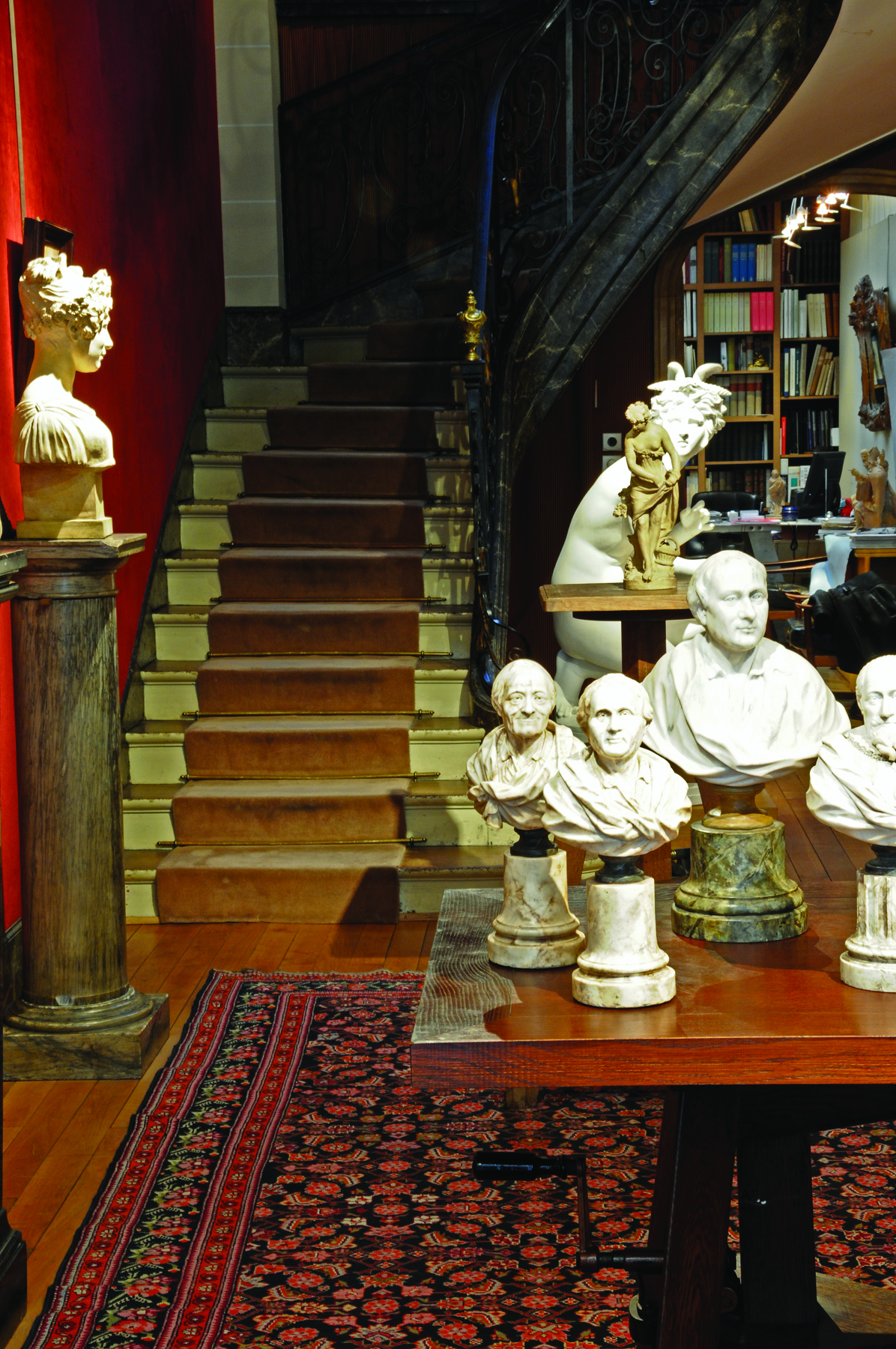
European sculpture
Galerie Patrice Bellanger
136, rue du Faubourg Saint-
Honoré (8th arrondissement)
33-(0)1-42-56-14-50
e-mail: patrice@galeriebellanger.fr
Portrait busts by Jean-Antoine Houdon, bronze chenets by Eugène-Emmanuelle Viollet-le-Duc, terracotta models, works on paper, and even avant-garde pieces of the 1930s-every object at Galerie Patrice Bellanger has a raison d’être, historical as well as aesthetic. Bellanger honed in on sculpture because “true works of art” rather than merely decorative pieces could be found at reasonable prices. He displays his treasures in a two-story showroom on the Right Bank that has the intimate charm of an old world hôtel particulier.
Bellanger warmly welcomes the public, explaining that his pieces yearn to be seen. Each time a visitor gravitates to a particular work he remembers all of the excitement he felt when he first discovered it.
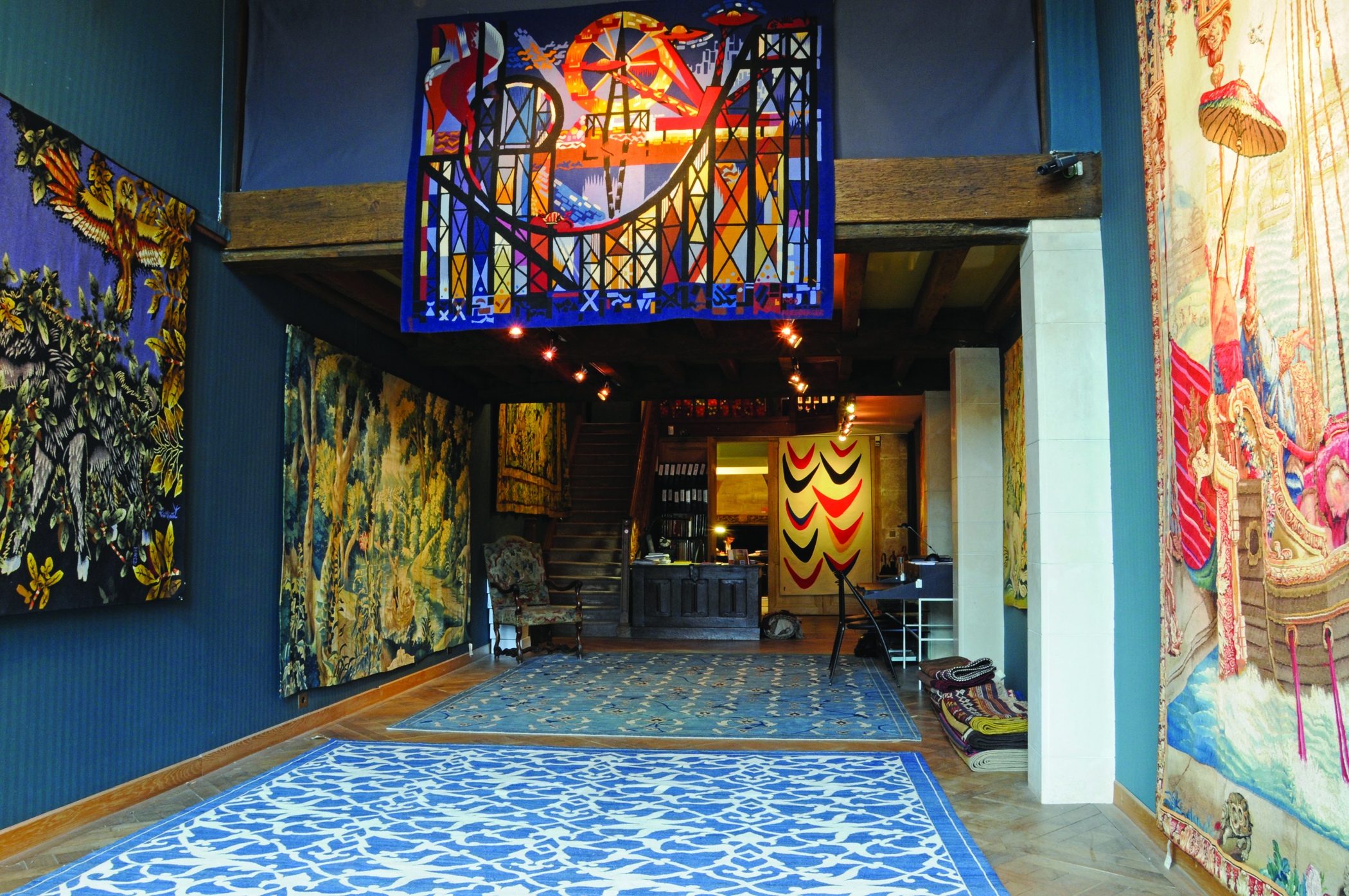
Tapestries and carpets
Galerie Chevalier
17, quai Voltaire
(7th arrondissement)
33-(0)1-42-60-72-68
www.galerie-chevalier.com
Dominique Chevalier and Nicole de Pazzis-Chevalier, with their three children, are leading dealers in European tapestries and carpets: vibrantly colored examples from Aubusson, Gobelins, and Beauvais, as well as staggering Flemish, Brussels, German, Italian, and Oriental works from the last quarter of the fifteenth century to the twentieth. The majority come from private French collections.
Although they specialize in ensembles of tapestries that have managed to stay together, the Chevaliers also offer fragments when they form complete compositions of interest.
Chevalier will exhibit at the San Francisco Tribal and Textile Arts Show February 13-15.
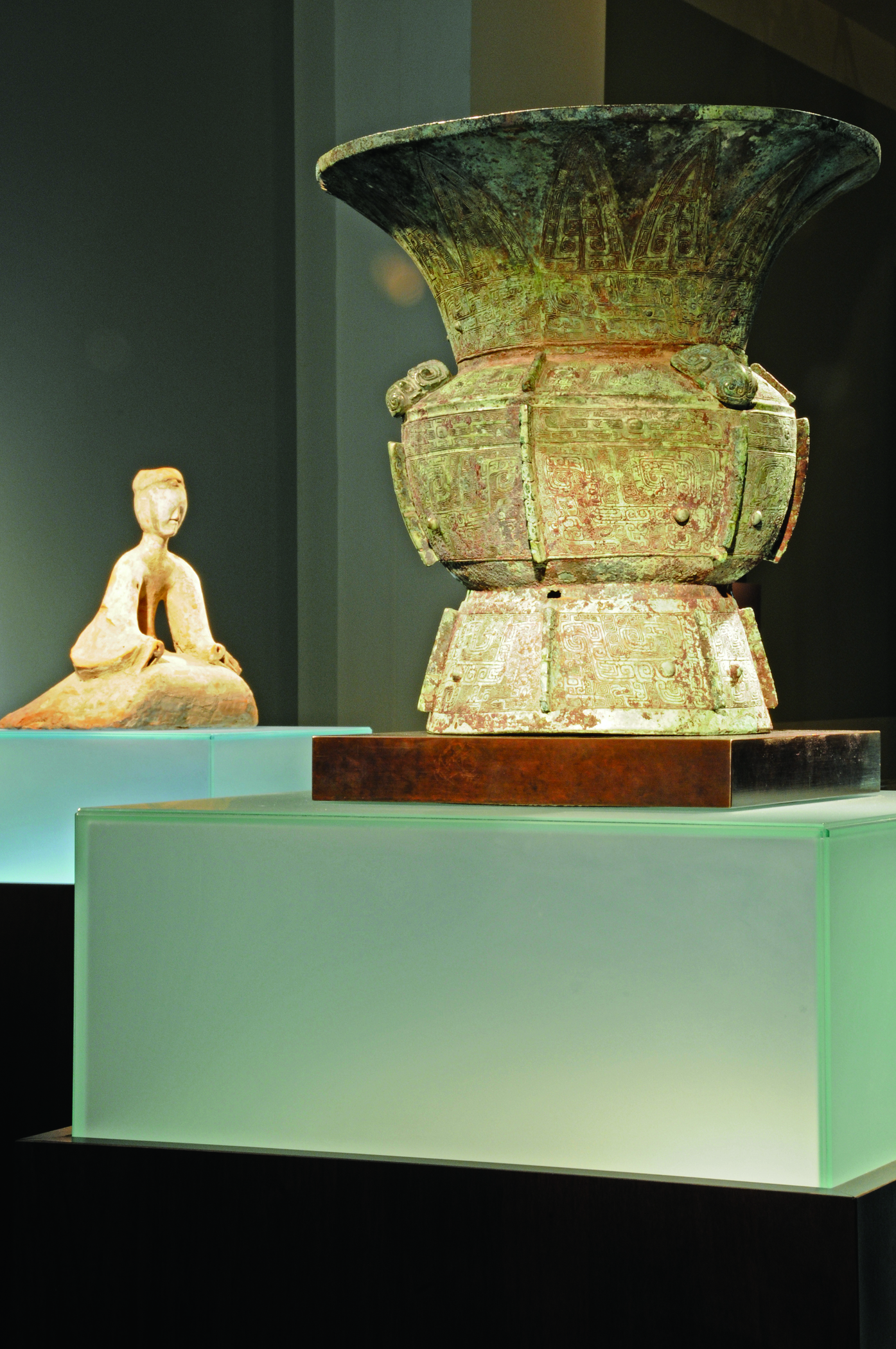
Chinese works of art
Galerie Christian Deydier
30, rue de Seine
(6th arrondissement)
33-(0)1-40-20-97-34
www.deydier.com
Christian Deydier has expanded beyond the ancient Chinese bronzes that first earned him his reputation into earthenware and sculpture. So too, he has extended his geographical territory into points all along the Silk Road, occasionally introducing superlative works not only from Mongolia and Tibet but also from India and even Egypt, if they are too irresistible to pass up.
As important as documentation is to him, he relies foremost on what he sees to tell him if a piece is right, sometimes disputing accepted attributions.
After six years as president of the board of the Syndicat National des Antiquaires, Deydier is pleased to return to his clients, travels, and research.
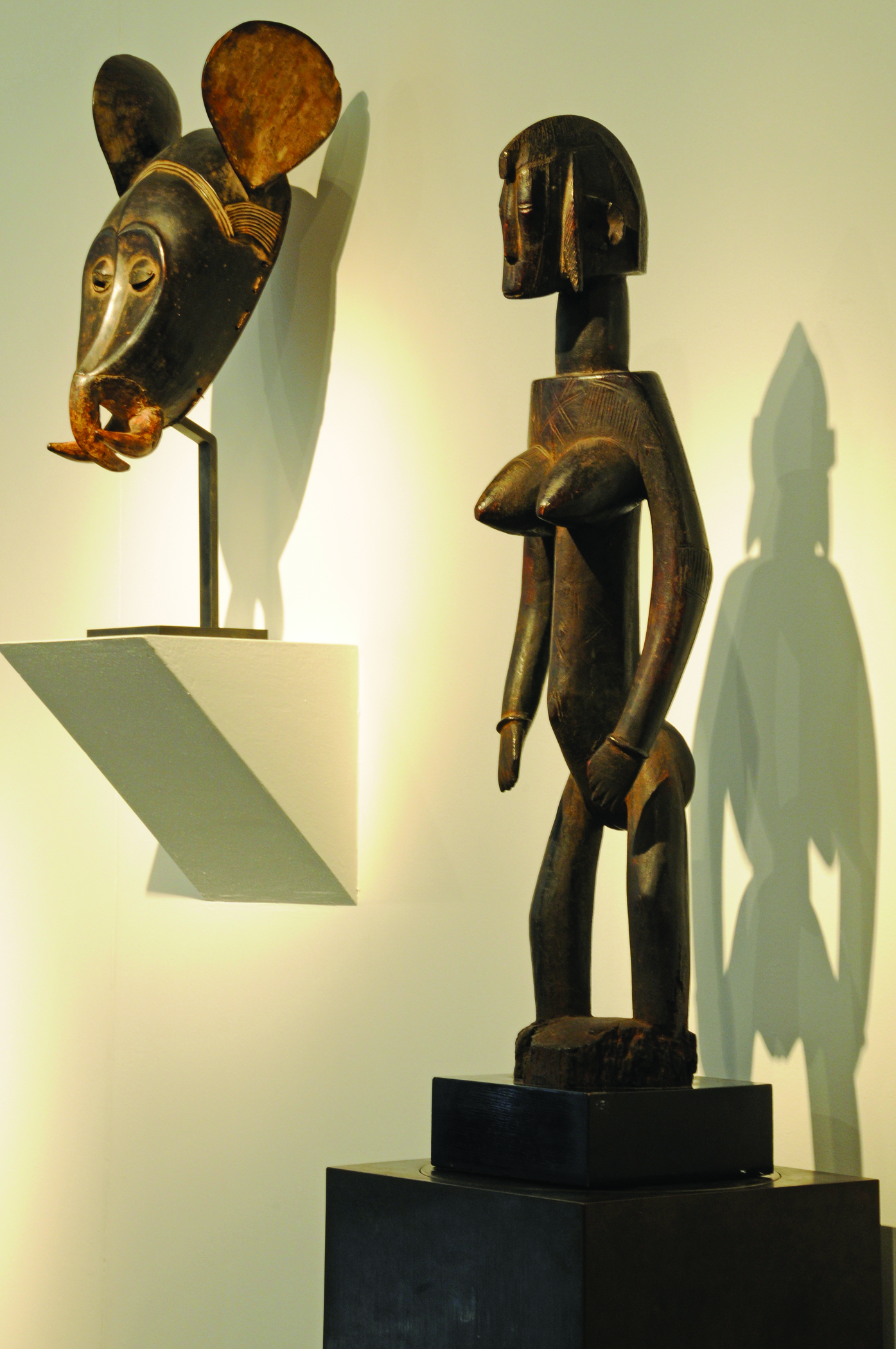
African and Oceanic arts
Galerie Alain de Monbrison
2, rue des Beaux-Arts
(6th arrondissement)
33-(0)1-46-34-05-20
www.monbrison.com
On the rue des Beaux-Arts, arguably the global epicenter for the tribal arts market, Alain de Monbrison exhibits statues and masks from across the African Continent and Oceania with stark lighting that emphasizes their compelling forms. If the thrill of working in a field replete with new discoveries first drew him in, he credits his success to an ability to recognize the presence of a true artist from that of the artisan or copyist. Students from the nearby École des Beaux-Arts and contemporary artists follow his displays assiduously.
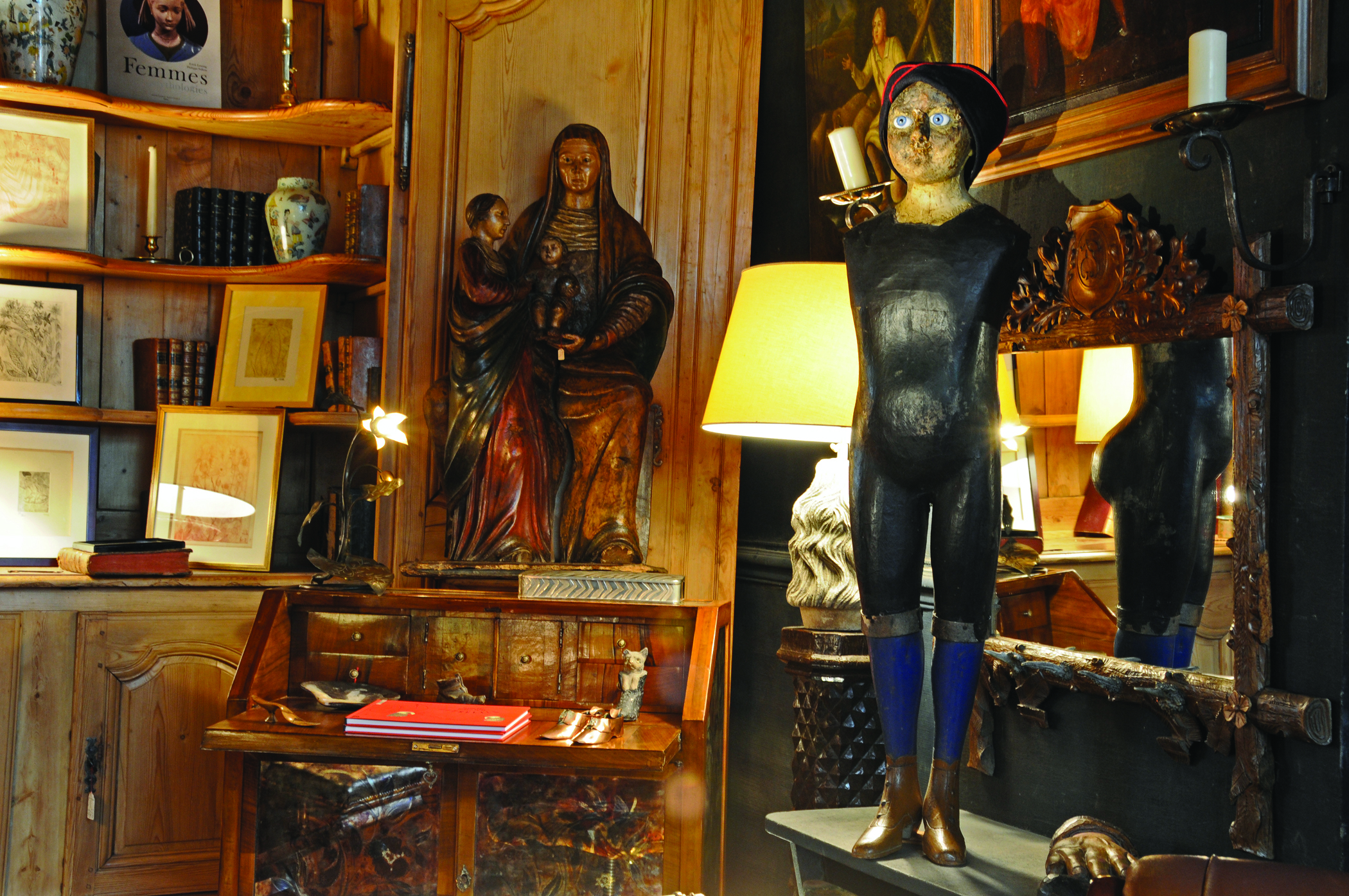
Quirky
Yveline Antiquités
4, rue de Furstenberg
(6th arrondissement)
33-(0)1-43-26-56-91
e-mail: antiquitesyveline@yahoo.fr
Since 1954, Yveline Antiquités, on the tranquil Place Furstenberg, has been a favorite haunt of those in search of interesting and unusual pieces. Although not of great monetary value, every object, painting, and sculpture exudes charm and magic. Proprietress Anne Thomas retains her predecessor’s specialties, such as wooden lay figures and model hands, while adding early twentieth-century furniture and contemporary photographs and lamps. She thrives on creating a concordance between diverse items: a fifteenth-century devotional sculpture, an antique doll with haunting eyes, and a nineteenth-century mirror in which they are reflected.
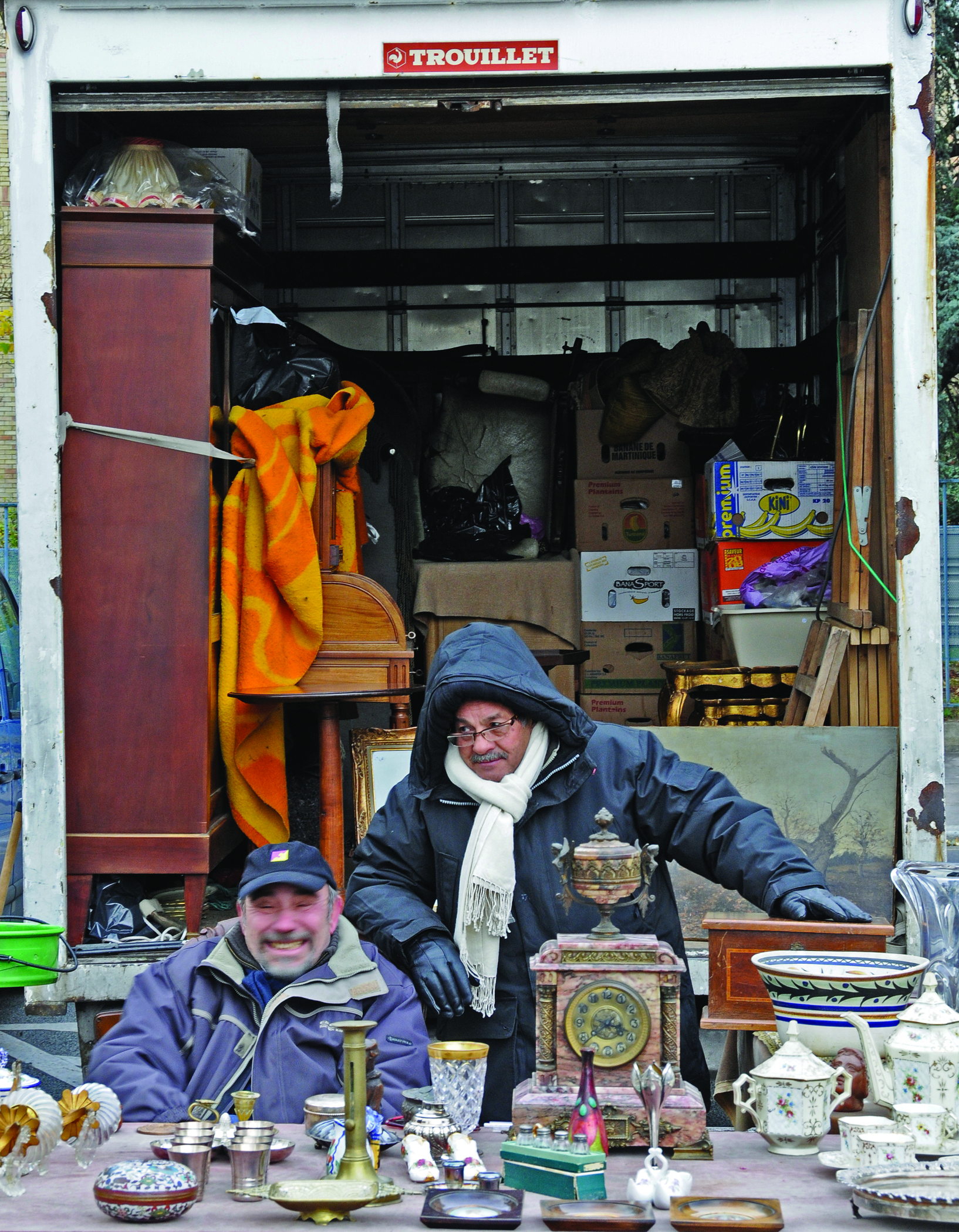
Flea market
Porte de Vanves,
avenue Marc Sangnier
and avenue Georges Lafenestre
(14th arrondissement)
Saturday and Sunday
7 am-1 pm and 3-5 pm
www.pucesdeparis-portedevanves.com
The flea market at the Porte de Vanves is smaller and less well known (thereby less picked over) than Saint-Ouen/Clignancourt. Every weekend more than 350 vendors set up their stands with furniture, porcelain, glass, silver, jewelry, pictures, linens, clothes, toys, books, albums, and all manner of bric-a-brac. If, as one vendor put it, it veers more toward the brocante (secondhand junk) than to real antiques, dedicated hunters nevertheless boast of amazing finds, all purchased amidst the jovial banter at which the French excel.
